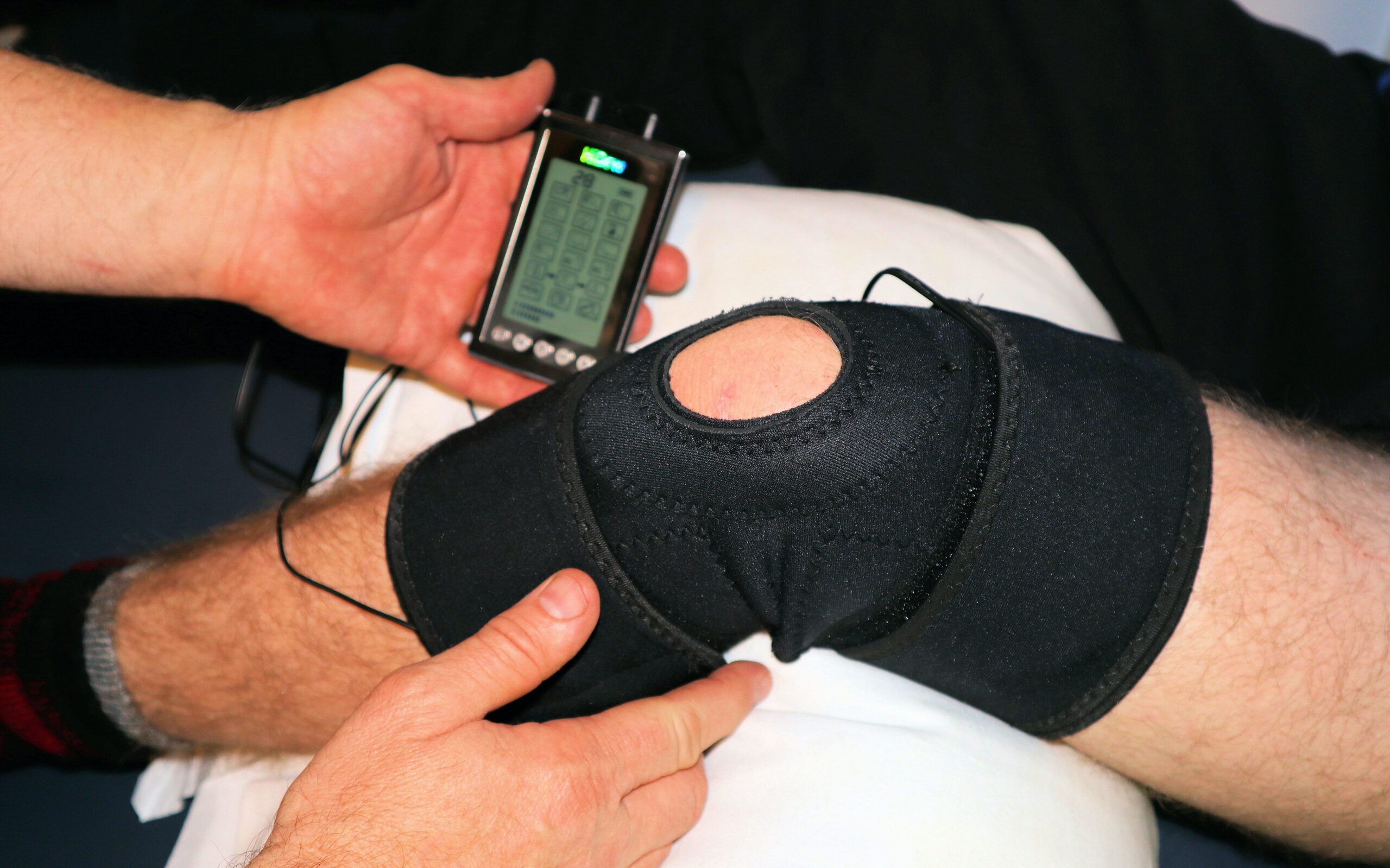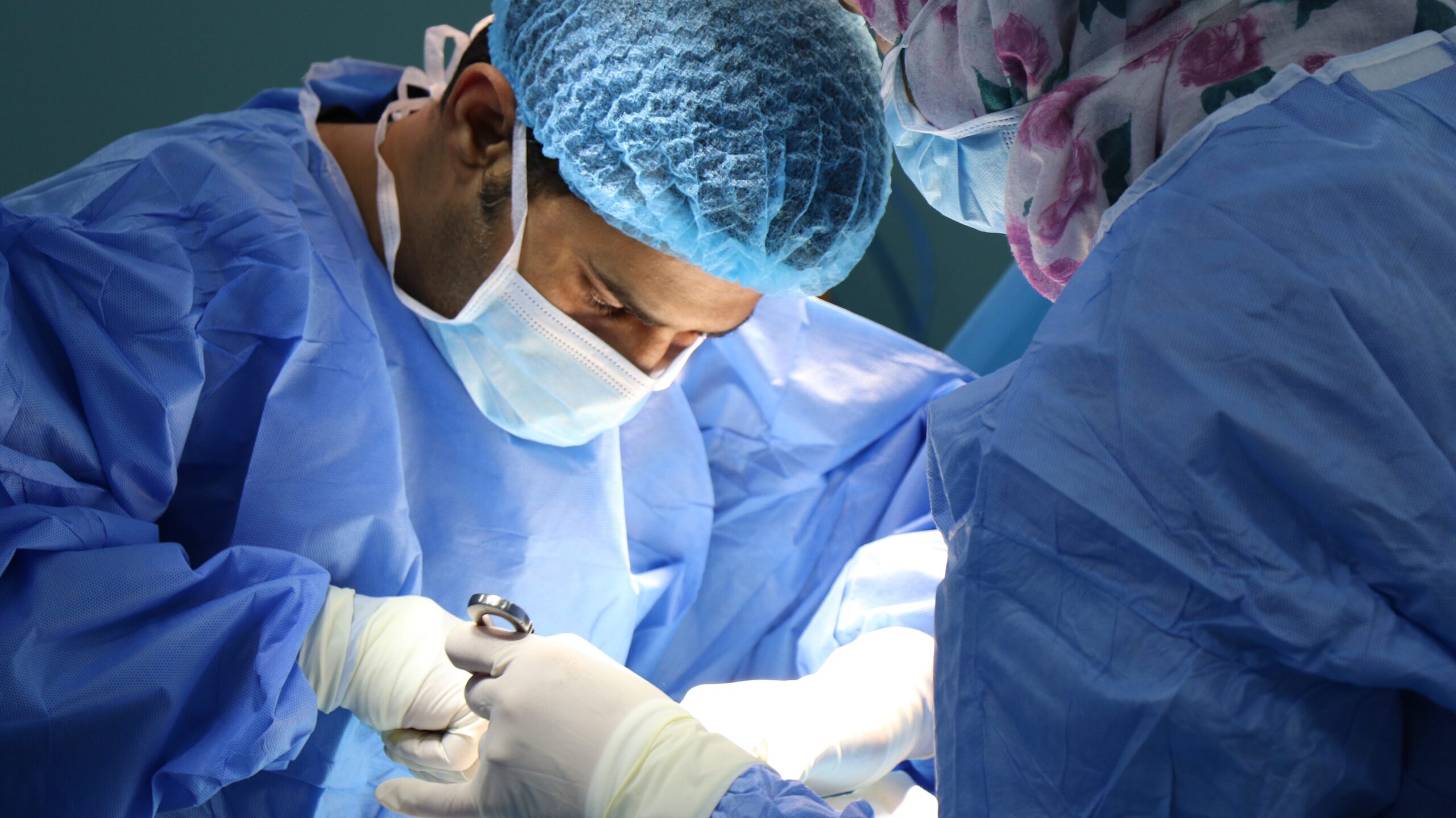News Team member Caroline Hansen reports that hospital closures across the United States threaten equitable healthcare access for rural populations and demand solutions.
How a Georgia Orthopedic Surgeon Saved the Knees of Athletes Around the World
Ten Years Ago He Discovered a Novel ACL Reconstruction Technique. It’s Still Widely Used Today.
By Andrew Feld
Kyle Hammond had only been a medical resident for a year when he noticed something that worried him. The athletes that came to him with tears of their anterior cruciate ligaments — a severe knee trauma that requires surgical repair — were younger than he was accustomed to seeing.
The eight- and nine-year-old athletes were so young, in fact, that the usual method of performing the repair, drilling a hole right through the knee joint, was off-limits because it would stunt their bones’ growth. Some new approach was needed. Without it, kids would not be able to get their knees fixed and would have to stop playing sports they loved.
For Hammond, that was unacceptable. He needed a new technique, and in 2013 — four years after starting to see those kids — he found it. Today, his novel method has been adopted nationwide.
“It took a little bit of clinical expertise,” said Dr. Hammond, an orthopedic surgeon for Emory and head Atlanta Falcons team physician, “but we’ve used it for years — not just myself, but others in my practice and now others across the country. It’s an excellent technique, and so I definitely think that has made a positive impact on youth sports and ACL injuries.”

Aiming for medicine — and just making it in
Hammond, who grew up outside Atlanta, was an athlete himself and experienced numerous injuries. In eighth grade, he tore his patellar tendon — which is a tissue that connects the bottom of the kneecap to the top of the shinbone. These injuries, combined with an experience he had meeting a sports medicine orthopedic surgeon led to a lightbulb moment where he realized sports medicine was the career for him.
He barely made it, though. His grades in high school and at the University of Georgia barely justified medical school admission, but scoring high on the MCAT exams vaulted him into the Medical College of Georgia. There, he needed to elevate his focus a few notches because not only was medical school extremely difficult, but the specialty he wanted, orthopedic surgery, was one of the most selective.
“These specialties are tiered based on supply and demand essentially,” said Hammond. “You’re up against the cream of the crop across the country who are achieving success in their grades and board scores — these standardized tests in medical school — to go into orthopedic surgery or dermatology or some of these other more competitive specialties.”
Hammond succeeded during his time at Medical College of Georgia, and ultimately, in 2008, got offered a one-year internship at Emory. He began his research, published a few book chapters, and ultimately returned in 2009 to begin his four-year residency.

Developing new surgery for the needs of kids
The work leading up to his novel ACL reconstruction technique first began in 2012. Hammond was in his third year of residency, working alongside Dr. Dane Todd, a second-year resident at Emory University and Dr. John Xerogeanes, Chief of Sports Medicine at Emory University. The trio noticed an uptick in youth ACL tears and was working on finding a solution.
They knew that the common ACL reconstruction technique — over-the-top reconstruction — could not be used on kids, as it would damage the growth plate — an area made of cartilage found on both ends of long bones, such as the femur, in young patients. As the bones grow, that cartilage hardens, and when bones become fully developed, the growth plate is closed. Over-the-top reconstruction disrupts that process and stunts bone growth.
The team thought about drilling holes through the side of the knee, to bypass the growth plate, however, doing so raised another issue: the reconstruction needed to be anatomic. In other words, the new ACL needed to go into the same space that it was located when the patient was born.
“Many of the pediatric techniques can go around the growth plate,” said Xerogeanes. “And while it avoids damaging the growth plate, it’s not an anatomic technique. So your biomechanics of the knee are not the same as what you were born with. Long term, that can lead to increased failure rates and also increase arthritis or increase other injuries.”
In a 2012 study published in the Journal of Bone and Joint Surgery, Hammond, Xerogeanes, and Todd used MRI scans to try and find landmarks that they could drill from that would bypass the growth plate while also ensuring an anatomic ACL reconstruction. The study found that the center of the ACL femoral footprint — located on the front, inside part of the knee joint — and the popliteus insertion — which rests just above the calf muscle on the back side of the shin and assists in flexing the knee — were easily identifiable landmarks capable of achieving that goal.
This study formed the foundation for Hammond’s groundbreaking technique that made it possible for youth athletes to return to the sport they loved sooner than ever before. And just one year later, in 2013, Hammond published his findings in the Journal of Bone and Joint Surgery, where not only did he further detail the procedure and its outcomes, but also provided images and videos to help other surgeons quickly understand the technique.
Still though, in the year between 2012 and 2013, the technique required more work: it was one thing to find these drilling sites; it was another to utilize them on a patient. And because the technique was so new, Hammond did not immediately start operating on patients. Instead, he practiced on cadavers and animal models to further fine-tune his skills. After plenty of practice, he was finally ready to utilize the technique on a patient for the first time.
“The first time we did it, our first athlete, it was slow,” said Hammond. “You’re being very careful; you’re being very slow; you’re triple-checking — which we still do, but you know, you’re even more so. And yeah, I remember that. It went great. And the kid did awesome.”

What made their technique so different
Quality outcomes were not unique to Hammond’s first patient. In fact, all patients in the 2013 study successfully returned to athletics.
The novel technique’s medical name is Anatomic, Transepiphyseal ACL Reconstruction. And while it allows youth athletes to get back to playing the sport they love sooner than ever before, it also confers other benefits: a new type of graft is now preferred by orthopedic surgeons and patients no longer suffer structural consequences from an untreated ACL tear.
For example, Xerogeanes, who was actually a co-author of the 2013 study, pointed out that it was one of the first times that doctors started using quadricep grafts to replace the ACL. A graft is a piece of living tissue transported surgically into an area that needs it, and in the case of someone who needed a completely new ACL, the hamstring and patellar tendon were the most common area to harvest it from (NIH).
Unfortunately, using the hamstring graft, in particular, can lead to excess damage around the graft site and long-term knee instability.
“There’s collateral damage when using the hamstring graft technique,” said Xerogeanes. “This new one, we make a little incision above the knee and take the quad and that does not have a significant collateral damage. You can’t feel the difference; it doesn’t look different, and it has a little tiny two-centimeter scar.”
Some doctors had already thought of using the quad, rather than hamstrings or patellar tendons, as a graft for ACL reconstruction, however, no major studies had been completed. A quad graft benefits young patients especially because their hamstrings are not as fully developed as their quads. Harvesting from the quad can provide a bigger and stronger graft, which is exactly what is needed for ACL reconstruction.

The 2013 study proved that this technique could benefit young patients, but now, doctors all over the country recognize that the stronger, more stable quad grafts benefit older patients as well.
For reference, the Cleveland Clinic found that “in 2010, only 2.5% of ACL reconstructions were performed with the quad tendon” (Cleveland Clinic). A 2014 study published in Knee Surgery, Sports Traumatology, Arthroscopy found that the number increased to 10.6%.
Xerogeanes believes quad graft usage continues to rise.
“Now about 30% of all the ACLs done in the United States are quad tendons,” said Xerogeanes. “That’s for adults and other people.”
The quad grafts used on those patients opened the door to the potential of this approach, and since then, quad grafts have taken the industry by storm.
Dr. Aristedes Cruz currently utilizes Hammond’s technique. Cruz completed a fellowship at Children’s Hospital of Philadelphia. That’s where he learned the technique and started seeing positive results.
“I trained [in Philadelphia] from 2014- 2015,” said Cruz, a pediatric, orthopedic surgeon for University Orthopedics Inc. in Providence, Rhode Island. “Since graduating from that fellowship program, I have started doing these types of ACLs in the right patients. Their outcomes after this are very comparable to ‘normal ACL reconstruction,’ so most of these kids will get back to sports.”
Preventing injuries down the road
Cruz has noticed another benefit that Hammond’s technique confers to patients: it protects against the negative structural effects of living with a chronic ACL tear — a situation most kids found themselves in when no surgical option existed.
“We know that kids who have a delayed ACL reconstruction down the line are at risk for further injury to the knee,” said Cruz. “We know that cartilage tears and meniscus tears can happen. So, theoretically, if you reconstruct the ACL and stabilize the knee sooner rather than later, that will hopefully prevent those future potential meniscus and cartilage injuries from happening.”
Hammond has continued to work for Emory and build his practice in the years following his discovery. In 2019, the Atlanta Falcons named him head team physician, a role he still holds. Hammond also treats athletes on the Hawks and Braves. He plans to continue in those roles, but his plans for the future include providing the next generation of orthopedic surgeons the same level of enrichment he experienced training at Emory.
“I’m really into the education aspect of teaching and training residents and medical students and fellows and things like that,” said Hammond. “So, I just hope to continue to evolve and grow my practice and grow my abilities as a teacher and as a surgeon.”
What gives him the most satisfaction is helping patients on a daily basis. Undoubtedly, there are kids today playing the sports they love that would not have been able to without the Anatomic Transepiphyseal ACL Reconstruction technique.

